June Friday History: Amhoist Tower and the St. Paul Hotel
In the early 1980s Kraus-Anderson completed two projects on St. Paul’s Rice Park that helped define the historical character of downtown St. Paul for a generation: renovating the St. Paul Hotel and building the Amhoist Tower. Both buildings are now on the National Register of Historic Places.
Rice Park
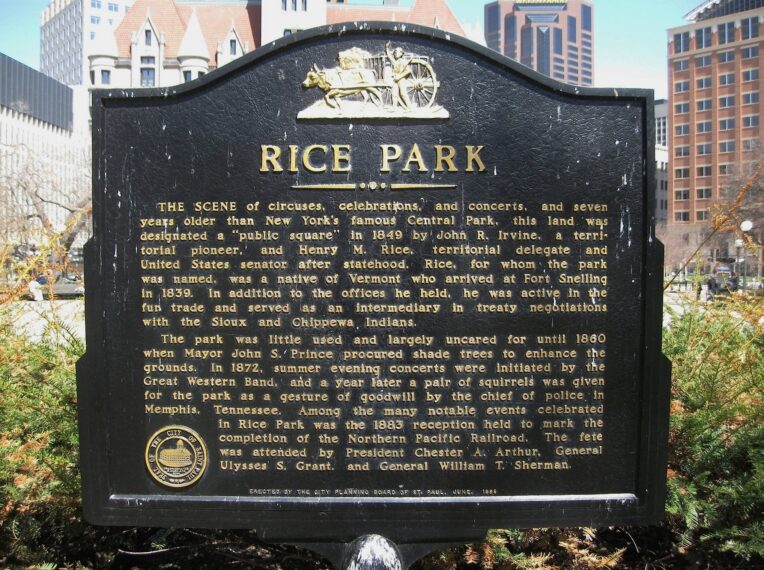
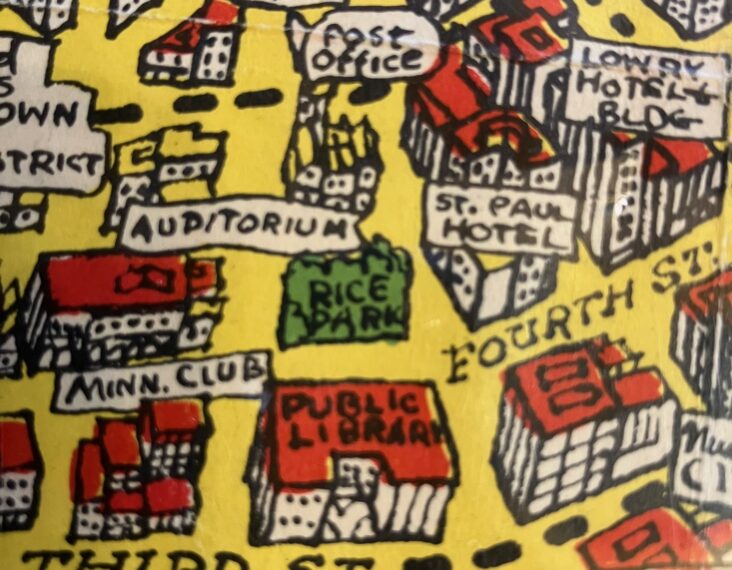
The buildings around Rice Park are the result of two major construction phases. In the early 20th century, the Federal Building (now the Landmark Center), the St. Paul Hotel, and the St. Paul Central Library were built. When the US Government vacated its castle-like Federal Building on the park’s north end, the decision to preserve it sparked a second wave of construction. Kraus-Anderson played a major part in this chapter of Rice Park’s story when it built the two structures that occupy the park’s eastern edge.

A few years after KA completed the Amhoist Tower, the Ordway Center on the Rice Park’s west end completed the picture. The accumulated result is almost unique in American cities: a European-like square surrounded by architectural landmarks.
The St. Paul Hotel
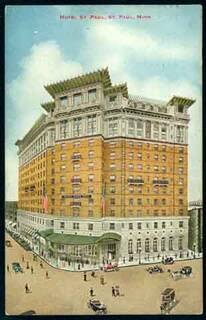
The 1982/83 renovation of the St. Paul Hotel was one of the most significant renovation projects of the Twin Cities urban renewal era. Known as the “million dollar hotel” when it was built in 1910, the St. Paul Hotel was the city’s preeminent hospitality landmark for over fifty years. It was the place you would probably sleep if you were rich, famous, or powerful, and happened to be in St. Paul. As Sarah Tomerlin Lee, renowned interior designer, pointed out: “The St. Paul Hotel was the center of the romantic period that F. Scott Fitzgerald wrote about.”
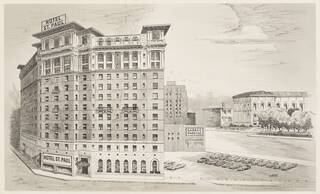
As suburbanization wore St. Paul’s urban core threadbare, the St. Paul Hotel declined right along with it. When the hotel closed in 1979, the needed repairs were extensive, but you didn’t need to be a fanatic conservationist to think that this Italianate landmark was worth saving. Local civic and business leaders worked with Lincoln Hotels, a Dallas-based company with experience operating historic hotels, to not only save the building but allow it to continue as a premier hotel. In its renovated form, the main entrance shifted to Rice Park, which helped make this ground zero for the revitalization of downtown St. Paul.
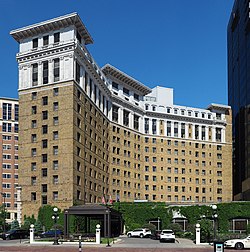
The Amhoist Tower
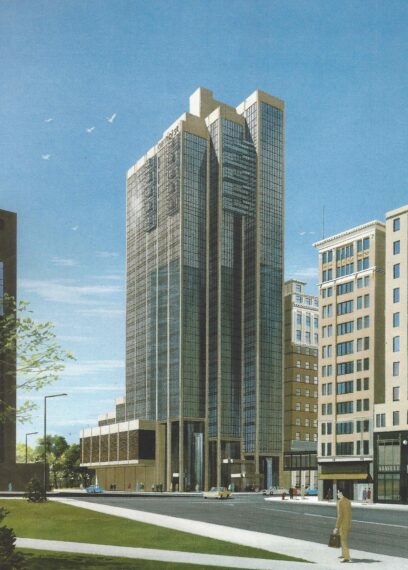
Making the cranes that dug the Panama Canal, American Hoist and Derrick was a foundational business for the United States’ construction industry.
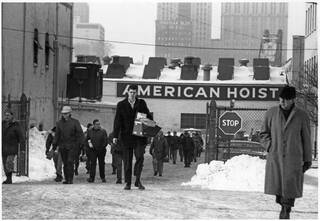
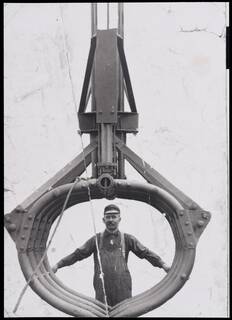
For a century the company was headquartered at its manufacturing facility across the Robert Street bridge from downtown St. Paul. Whether it was tired of its grimy, flood-prone westside digs, or whether one of St. Paul’s only fortune 500 companies needed a headquarters to match its prestige, Amhoist celebrated its centennial year by joining Yorktown Development in one of the more unique stories in the history of Twin Cities real estate development.
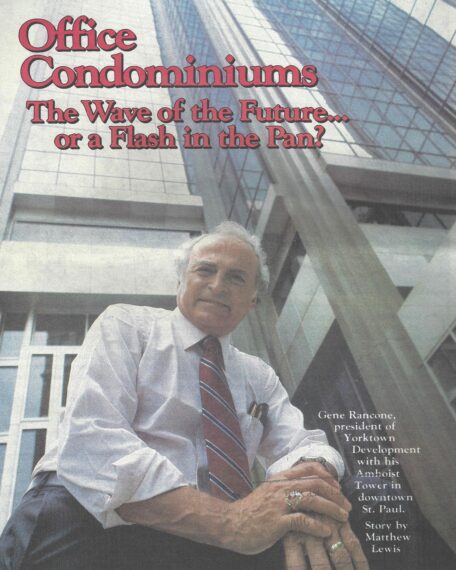
The Amhoist Tower was conceived as an entirely owner-occupied building, with residential condominiums above office condominiums. Amhoist’s 200 employees originally occupied the top floors of the business condos. Most of the building was purchased from Yorktown as “shell” or unfinished space by investment groups who then finished the space for lease to lawyers and others in need of office space. Purchasers on the residential floors had the option of buying a shell and fishing it themselves or paying the developer extra for a finished condo.
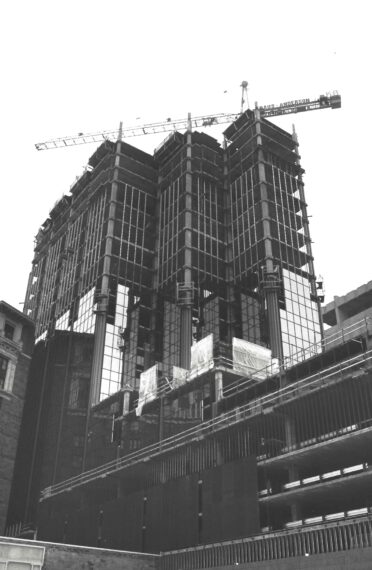
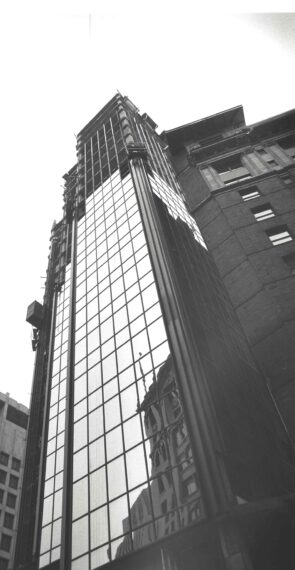
At first, the building’s offices were more popular, and the luxury condos were harder to sell. Two of the residential floors were converted to offices at one point. This trend gradually shifted, and (as of 2024) once the real estate developer Sherman and Associates completes their current renovation project, the building will be entirely residential.
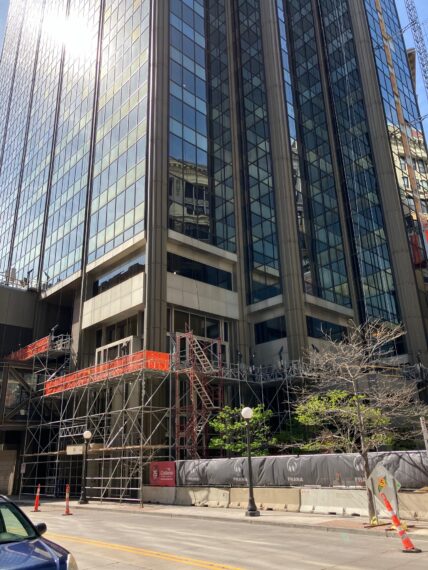
The move to downtown St. Paul turned out to be bad timing for Amhoist. When the company decided to move, their core business of manufacturing cranes was strong, and it was expanding into the hardware business. By the time the move actually happened, things were looking dire. The early 1980s were particularly bad for two key sectors on which their core business depended: construction and oil exploration. American Hoist and Derrick would only spend about five years in its new headquarters before falling victim to a corporate takeover and relocating to Denver.

CATEGORY: Uncategorized